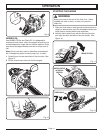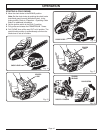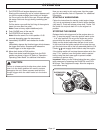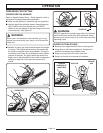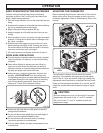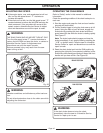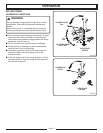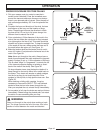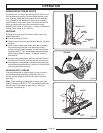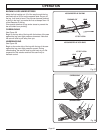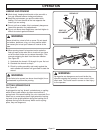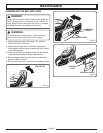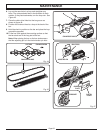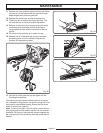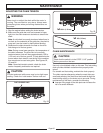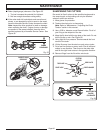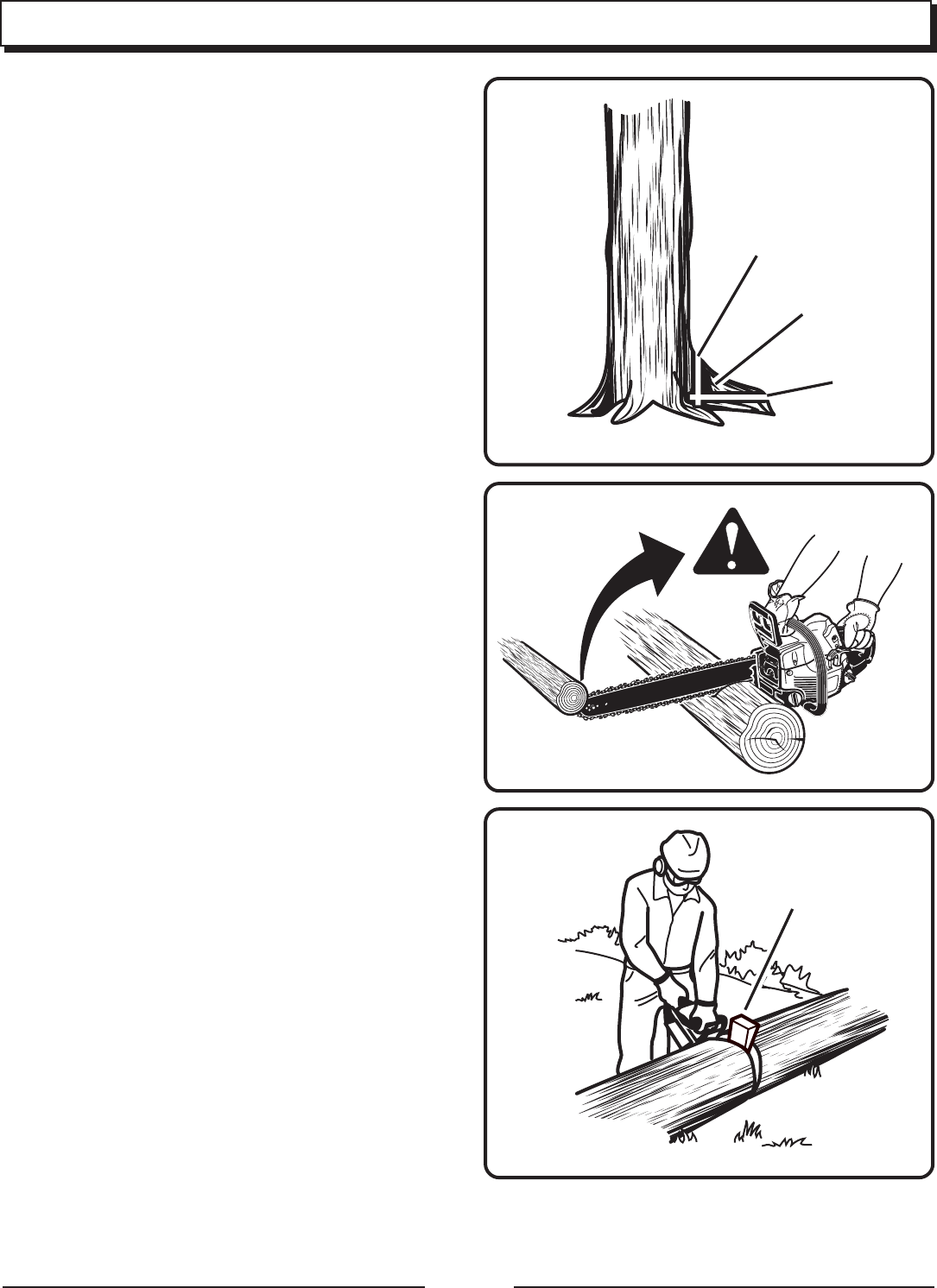
Page 19
REMOVING BUTTRESS ROOTS
A buttress root is a large root extending from the trunk of
the tree above the ground. Remove large buttress roots
prior to felling. Make the horizontal cut into the buttress
first, followed by the vertical cut. Remove the resulting
loose section from the work area. Follow the correct tree
felling procedure after you have removed the large
buttress roots. Refer to “Operation – Proper Procedure for
Felling Trees” earlier in this manual.
BUCKING
Bucking is the term used for cutting a fallen tree to the
desired log length.
■ Cut only one log at a time.
■ Support small logs on a saw horse or another log while
bucking.
■ Keep a clear cutting area. Make sure that no objects
can contact the guide bar nose and chain during
cutting, this can cause kickback. To avoid the danger,
keep the SAFE-T-TIP
®
anti-kickback device attached
while cutting. Refer to “Safety – Kickback” earlier in
this manual.
■ During bucking operations, stand on the uphill side so
that the cut-off section of the log cannot roll over you.
■ Sometimes it is impossible to avoid pinching (with just
standard cutting techniques) or difficult to predict which
way a log will settle when cut.
BUCKING WITH A WEDGE
If the wood diameter is large enough for you to insert a
soft bucking wedge without touching the chain, you
should use the wedge to hold the cut open to prevent
pinching.
Note: When bucking or felling with a wedge, you may
need to remove the SAFE-T-TIP
®
anti-kickback device to
allow the bar to be drawn through the cut. After you
complete, reinstall the tip.
HORIZONTAL
CUT
KICKBACK
WEDGE
VERTICAL CUT
LOOSE
SECTION
Fig. 34
Fig. 35
Fig. 36
OPERATION



